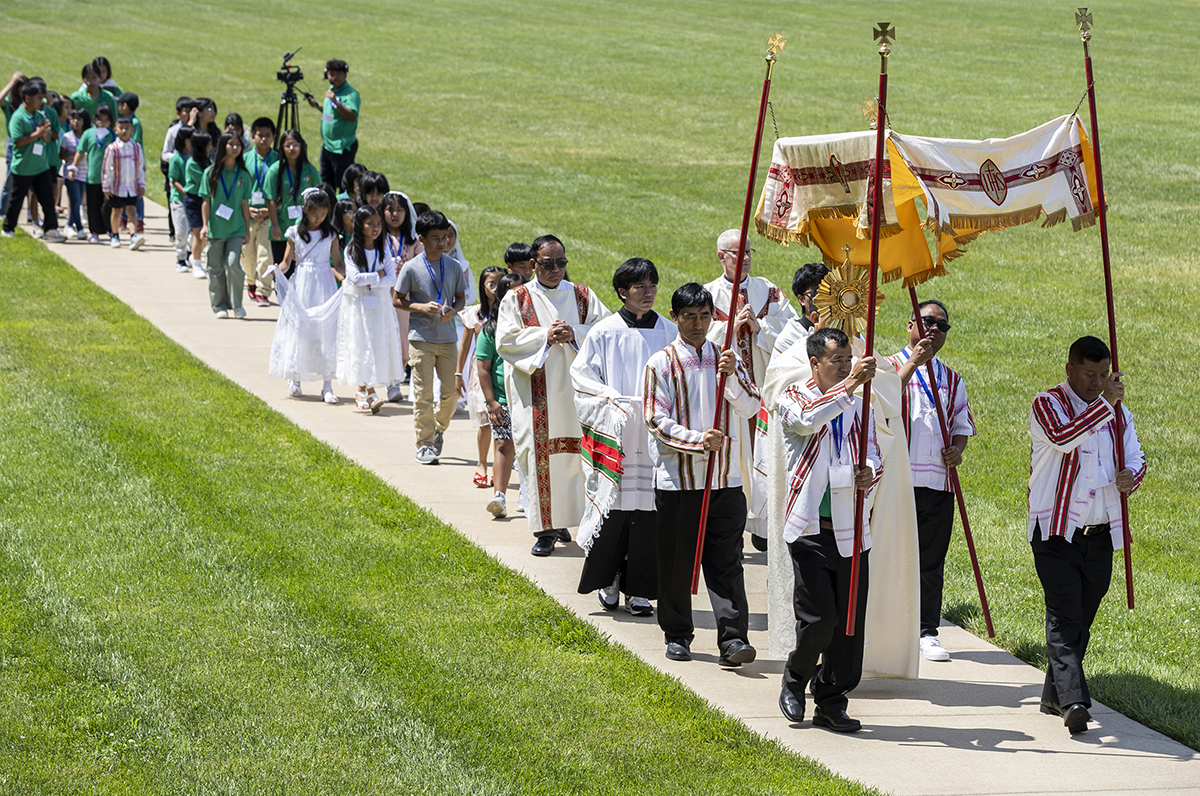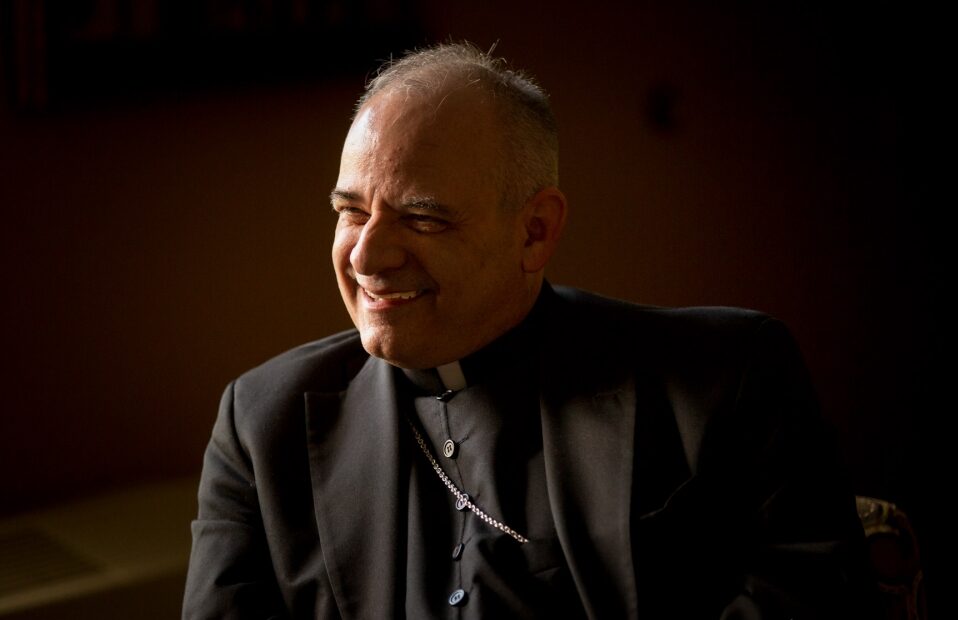‘Rose-colored glasses’ provide vision for St. Louis
Idealistic bishop, saint brought Catholic education to the archdiocese

Bishop Louis W.V. DuBourg and St. Rose Philippine Duchesne were key builders for the Archdiocese of St. Louis.
However, they always didn’t see eye-to-eye. In fact, St. Philippine Duchesne lamented in a letter dated September 1823 that the visionary DuBourg “sees everything through rose-colored glasses,” which is among the earliest written usages of the phrase to describe optimism when a situation calls for skepticism or doubt.
Still, they persevered. Thanks to them, the archdiocese is celebrating 200 years of Catholic education, and thanks to the Archdiocesan Archives, their influence is celebrated in a new exhibit in the Rosati Museum at the Cardinal Rigali Center in Shrewsbury.
Archivists Eric Fair, Rena Schergen and Eric Holt developed the exhibit, “1818: A Year Of Beginnings.” Schergen studied Bishop DuBourg, Holt researched St. Philippine Duchesne and Fair covered the past 200 years, highlighted by Cardinal Joseph E. Ritter’s integration of Catholic schools.
Here’s a brief look at each section through the eyes of the archivists:
The Visionary
Unfamiliar with Bishop DuBourg’s background entering the project, Schergen discovered a “very idealistic man,” who made his mark after the French Revolution, traveled back and forth across the pond and played a role in a number of schools in the New World — St. Mary’s College in Baltimore, Georgetown College in Washington, D.C., Mount St. Mary in Emittsburg, Md., St. Mary of the Barrens Seminary in Perryville, the Academy of the Sacred Heart in St. Charles and St. Louis Academy. He also had a brief stint in Cuba.
“He was just all over the place,” Schergen said, with a laugh. “He ends up in New Orleans as administrator (of the Louisiana/Florida Diocese), but there’s a corrupt priest at the cathedral, who is turning everyone against him, and DuBourg is forced to live with Ursuline Sisters.”
Then, on a trip to France, DuBourg recruited Vincentian Fathers Felix DeAndreis and Joseph Rosati, the Society of the Sacred Heart and St. Philippine Duchesne; and Pope Pius VII appointed him bishop of Louisiana/Floridas. Returning to New Orleans was a non-starter, so he picked St. Louis as his See city, arrived in January 1818, and the fledgling river town would never be the same.
A New Role

St. Philippine Duchesne followed about eight months later; she thought she would teach Native American children, but Bishop DuBourg changed her plan.
“The moment she got here she was told, ‘You’re going to build a new school in the coming center of the world — St. Charles,’” Holt said. “DuBourg literally thought that St. Charles was going to become like New York City of Midwest America. All of the trade in the world is going to come through St. Charles.”
Thereafter, their relationship was strained at times, but she did as instructed and started the school in St. Charles. It closed a year later, but DuBourg insisted that she start another school in Florissant. Money was tight, exacerbating the difficulty of pioneer living.
“In many of her letters back to her superior (in France), she said, ‘If you’re going to send people to us, make sure to let them know this is a real hard place to live,’” Holt said.
Voice For Change
But Catholic education was on its way in St. Louis. By the mid-20th century, the “Rome of the West” was teaming with Catholics, but the sin of racism was apparent in St. Louis Catholic schools. White students and black students were educated separately … until then-Archbishop Joseph E. Ritter arrived and desegregated the schools in 1947.
“Going through his correspondence and administrative documents, you can see his drive and determination to end segregation,” said Fair, the archives’ director. “He already had integrated schools in Indianapolis. The language he used to talk about it: ‘This is within Catholic teaching.’”
And it’s embodied in the Catholic education set in motion 200 years ago by Bishop DuBourg and St. Philippine Duchesne.
List and map of St. Louis parishes in 1818, when Bishop Louis W.V. DuBourg arrivedPhoto Credits: photos courtesy Archdiocesan Archives Bishop Louis W.V. DuBourg and St. Rose Philippine Duchesne were … ‘Rose-colored glasses’ provide vision for St. Louis
Subscribe to Read All St. Louis Review Stories
All readers receive 5 stories to read free per month. After that, readers will need to be logged in.
If you are currently receive the St. Louis Review at your home or office, please send your name and address (and subscriber id if you know it) to subscriptions@stlouisreview.com to get your login information.
If you are not currently a subscriber to the St. Louis Review, please contact subscriptions@stlouisreview.com for information on how to subscribe.






